
Gardening in a Growing Dome greenhouse is unique to any other growing environment. Keeping a greenhouse warm and controlling humidity throughout the winter months can pose a challenge to new gardeners. However, there are a few simple practices that can help you overcome these challenges and create a thriving year-round greenhouse in cold climates.
An arctic blast swept through the northern half of our continent just before Christmas. On our Facebook groups we saw reports of temperatures as low as -21F in the US, and even colder in Canada. Despite these frigid temperatures, Dome Owners were still able to keep their plants alive and thriving by adding a bit of supplemental heat. Even if the temperature drops below freezing in the Dome, hardy plants will survive and perk back up as the sun hits them the following day.

The Science of the Growing Dome
The Growing Dome is one of the only greenhouse kits on the market that includes a greenhouse heat sink. The above ground pond creates thermal mass in the greenhouse that absorbs the heat from the sun throughout the day and slowly releases this heat into the surrounding environment overnight. Painting the sheet metal surrounding the pond a dark color is recommended so that the metal can absorb as much heat as possible throughout the day. The pond is strategically placed along the north wall so the Reflectix insulation that lines the north side of the Growing Dome can reflect the sunlight from the south onto the pond. This design maximizes solar gain throughout the winter months in the northern hemisphere. You may find supplemental heating necessary only if you have an extended period of cloudy days combined with below freezing temperatures.
To mitigate the necessity of supplemental heat we have included a few other key features to the Dome. The foundation wall’s insulation helps retain the heat in the soil of the interior raised beds. This insulation combined with the use of the undersoil system turns the raised beds into another thermal mass in the greenhouse. The undersoil system utilizes a fan to push or pull air through the soil depending on the season. The fan then blows the air through a 4” irrigation pipe under the soil in the raised beds. In the winter you will want the fan pulling the warm air from the southern side of the Dome towards the pond to warm the soil and get the most out of this greenhouse heat sink. Warm soil equals happy roots! Happy roots equals happy plants!
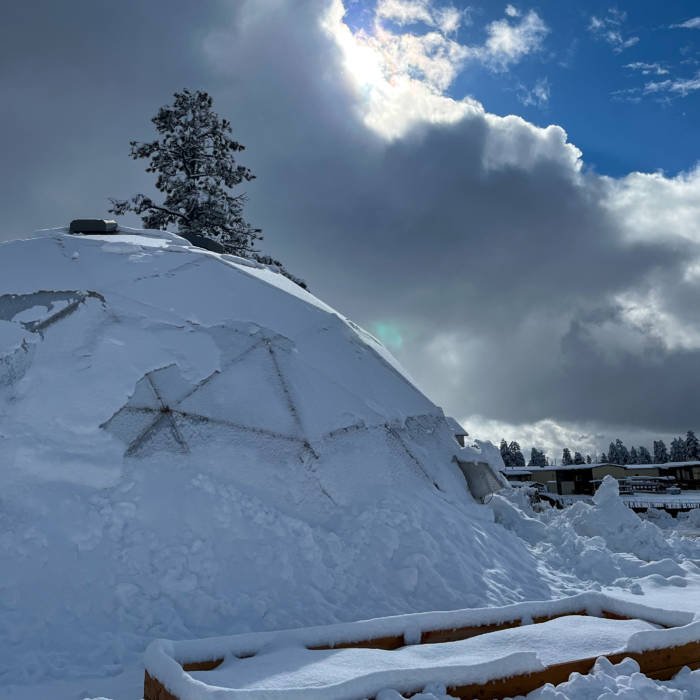
If you live in a cold climate that does not get much snow, you can add exterior raised beds along the southern wall to further insulate the Dome. If you live in a climate that does receive a significant amount of snow, you can use the snow to your advantage and allow it to build up against the foundation wall to insulate. Just remember to keep the snow below the top of the foundation wall on the southern aspect to maximize the solar gain. If snow builds up on the north side as high as the Reflectix insulated panels this also acts as extra insulation. We have also had customers build their Domes on above-grade insulated concrete form foundations and with full-blown climate batteries for even further temperature regulation.
Winterizing a Greenhouse
The first thing that you will want to do to keep your greenhouse warm without electricity is to winterize your Growing Dome. Adjusting or disengaging your vent openers and fan shutters to prevent heat loss and cold drafts from entering the Dome is a great place to start. To further insulate, insert rigid foam and/or apply a tarp or greenhouse plastic to cover the openings of the fan hoods. Finally, make sure to seal off any gaps that may be present with tape or foam. For more detailed information, check out our article on how to prepare your greenhouse for winter.
Selecting Hardy Winter Crops
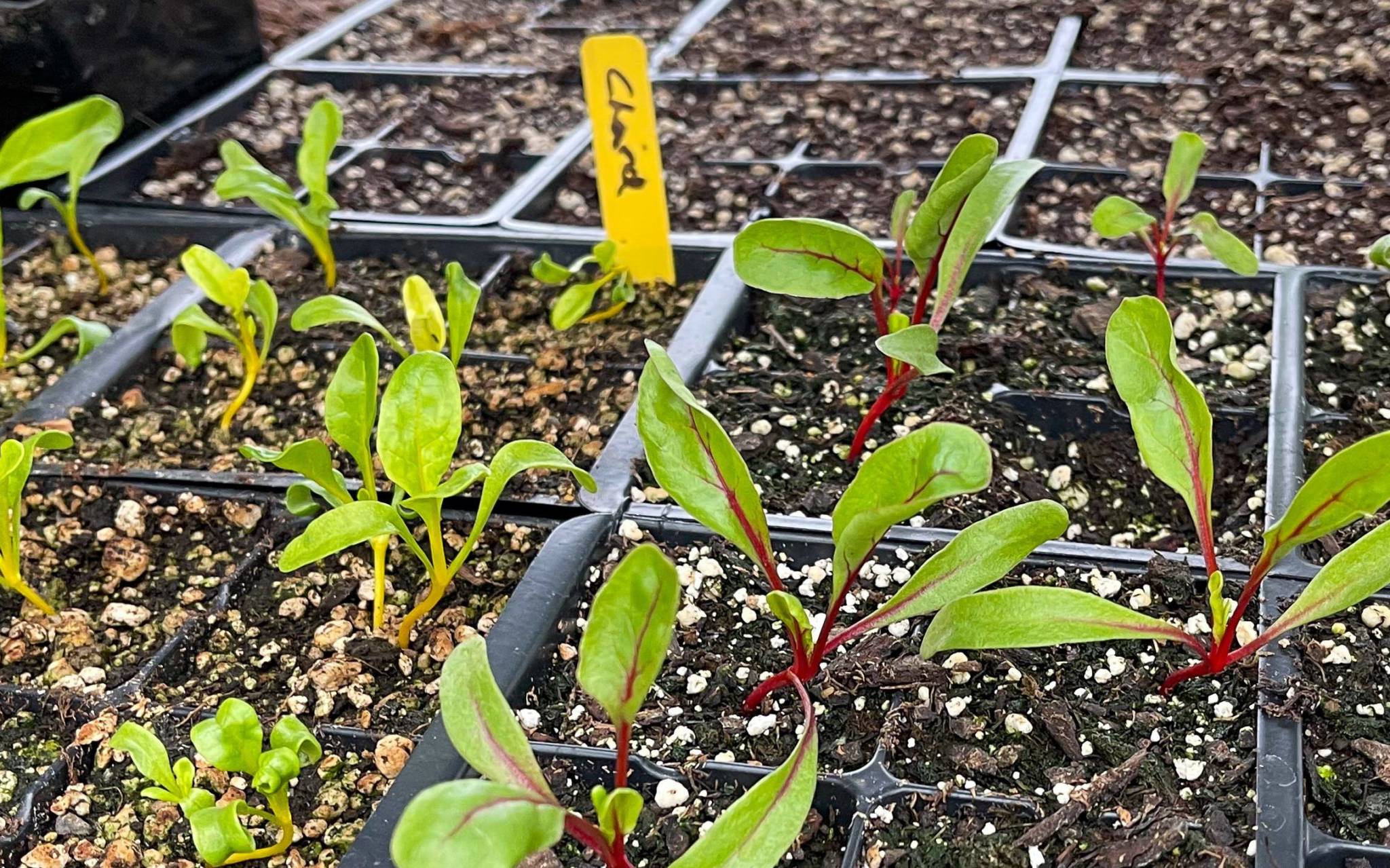
By selecting hardy winter crops you will find that additional heat is likely not necessary. Crops such as kale, broccoli, chard, lettuce, arugula bok choy, beet, radish, peas and mustard greens are both cold hardy and shade tolerant. Cultivating these types of plants is great for those in northern climates due to cooler ambient temperatures and shorter days. We have a very helpful planting schedule that can help you select the best crops for each season, if you live in zones 4-5.
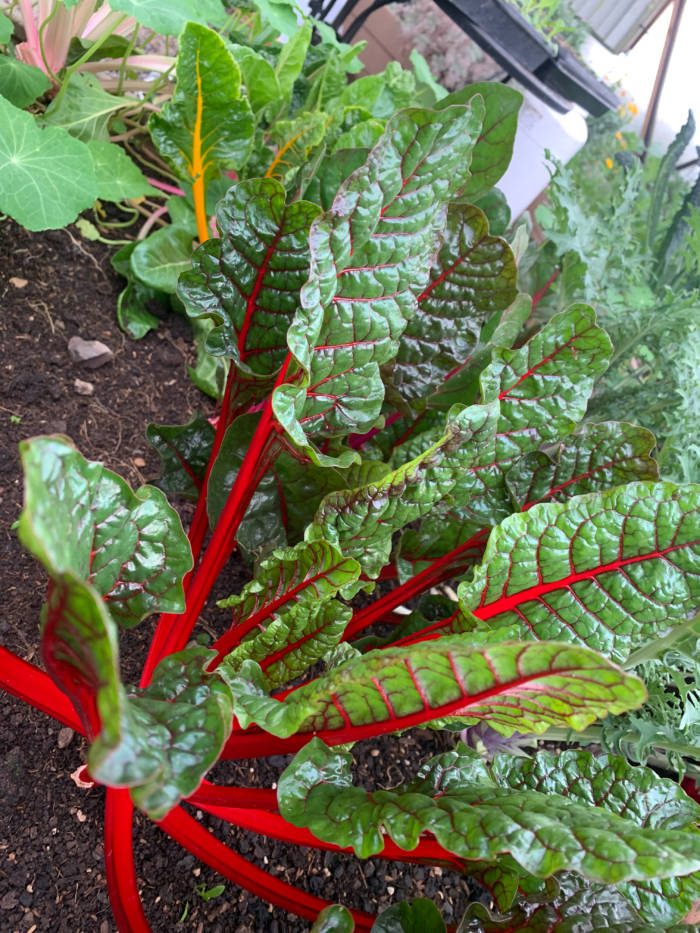
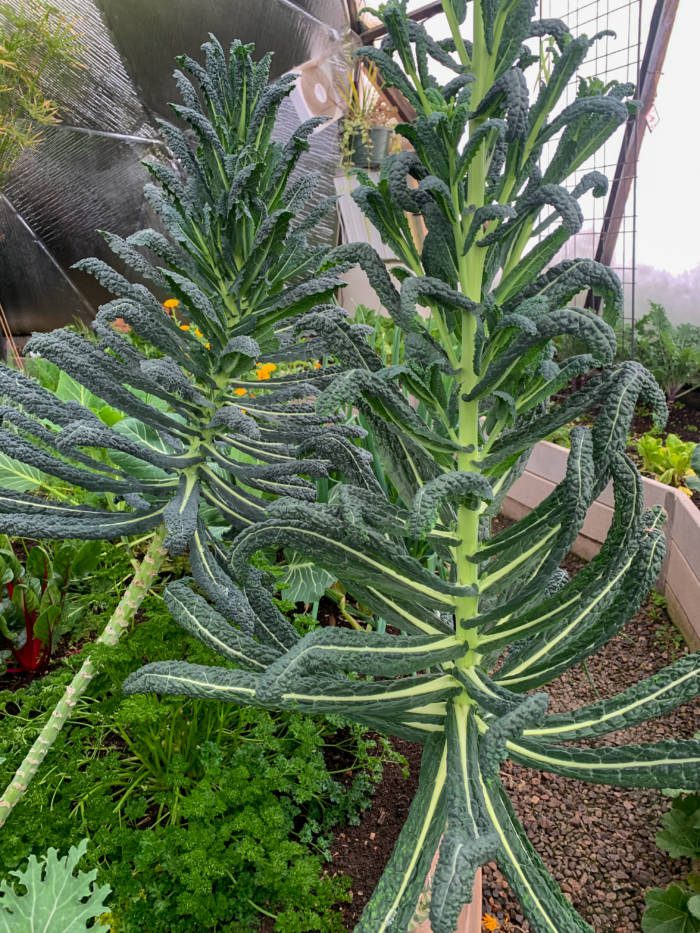
Supplemental Heat
Depending on your crops and environment, you might find that supplemental heating is needed to keep your plants happy and healthy during periods of the winter months. Citrus certainly enjoy some extra heat. Tropical plants are going to want significantly warmer temperatures and more light than the cold hardy winter crops that we mentioned above. There are a few best practices that we recommend no matter the heating source that you choose to keep your greenhouse warm. Check out our heat loss calculation spreadsheet to determine how much heat, if any, you need to add to your Dome over the winter months.
How to Keep a Greenhouse Warm Without Electricity
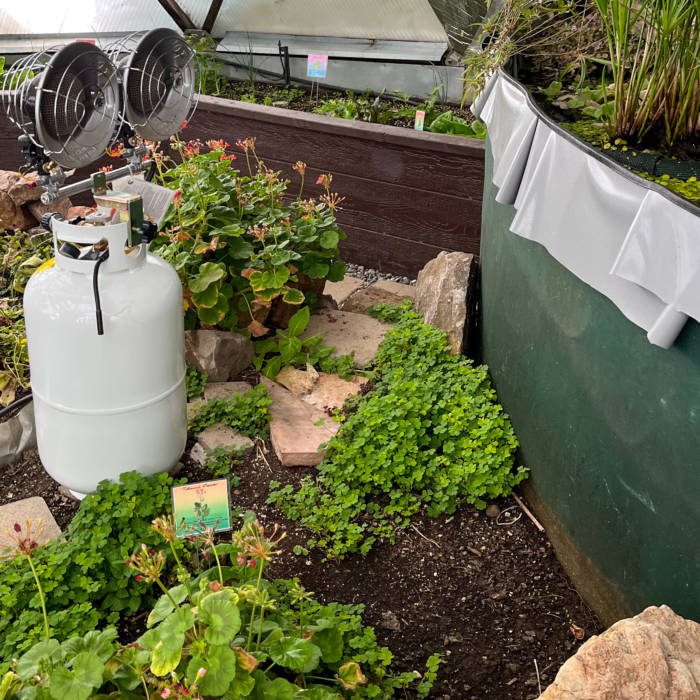
We have utilized one primary heating method over the years to warm our greenhouses; propane heaters. This method works best when the heater is directed towards the pond and positioned 6-12” away from the sheet metal, if using a single burner style radiant heater. Depending on the size of your Growing Dome, we recommend between 9,000 and 30,000 BTU options from Mr. Heater. This method is extremely effective, but propane does release water vapor into the air. If you utilize this method, know that higher humidity levels and condensation are normal.
The aquaponic source has developed the AquaHeat propane or natural gas heater. It comes fully assembled, mounted, and tested. The entire system can be powered with a 12v car battery tying into your existing natural gas or propane used to heat your home. Another common type of propane/natural gas heaters are the Modine Hot Dawg garage heaters. They have several sizes available from 30,000 BTU – 125,000 BTU which makes these ideal for larger Dome sizes. These are great options if you do not have access to run electricity out to your Growing Dome or just prefer the off-grid capabilities of the Growing Dome without lugging around heavy propane tanks.
Another alternative to keep your greenhouse warm is a wood stove. Heating a greenhouse with wood creates dry heat as opposed to other options. Warming up the pond is beneficial in utilizing the thermal mass of the water to capture and retain the heat throughout the day and slowly release it at night, but can add a small amount of extra humidity. The dry heat of the woodstove can actually help to reduce the overall humidity in the Dome and mitigate pests and fungal growth.
Dawn Shoffner owns a 22’ Dome and lives in zone 6a. She has a large variety of flowering plants, herbs, vegetables, and a 2 year old Pink Brandywine Tomato plant. Her husband’s goal is to grow and harvest tomatoes year-round. When asked how she determines when to heat the Dome Dawn said: When the temperatures outside are going to be below 15 degrees Fahrenheit, the temperatures in the dome start to fall below 40 degrees. Our first winter (2020) we had -19 degree temps and the temperature in the dome was 27 degrees. Our goal is to not have the temperatures fall below freezing, however, we’d like them to be closer to the 40 degree range.
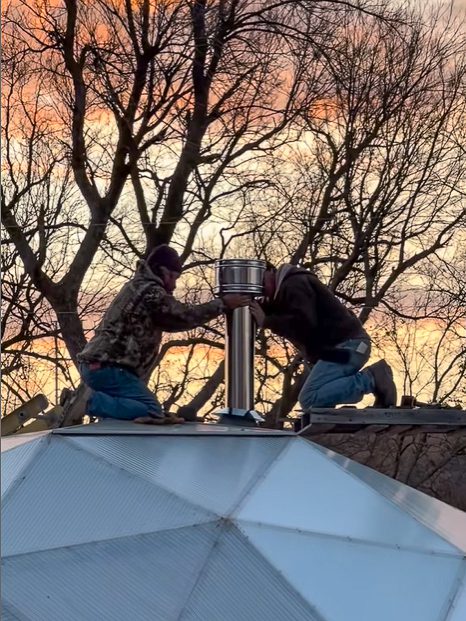
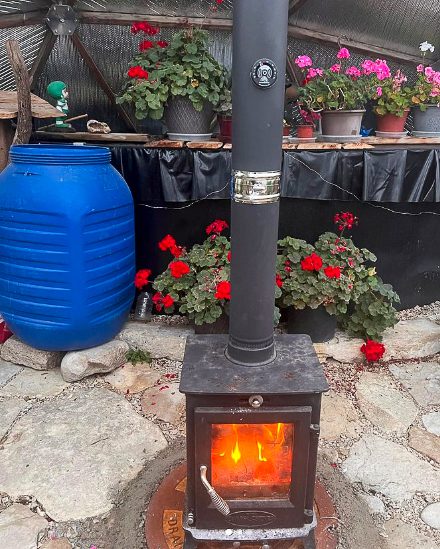
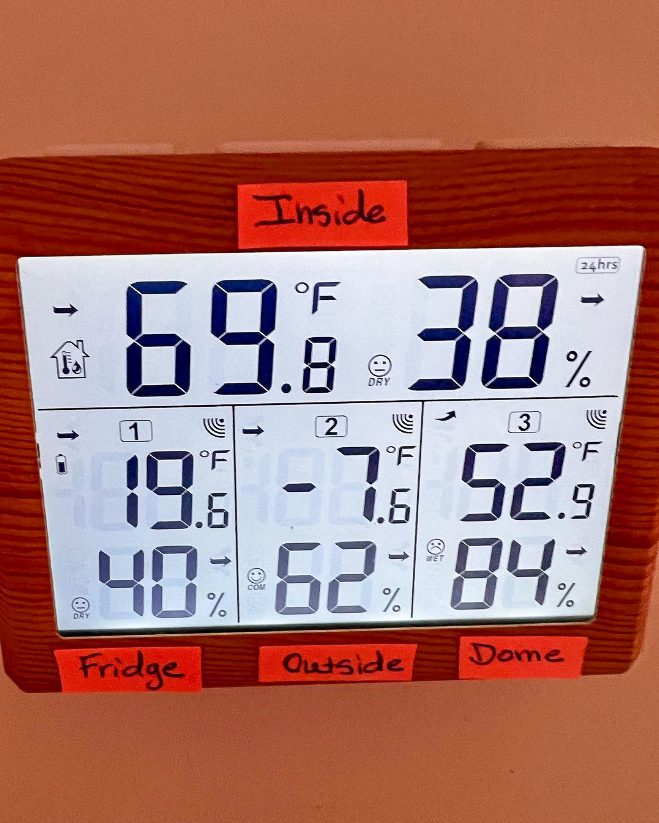
Dawn purchased the largest size stove that Tiny Wood Stove sells, the Dwarf 5kw, and consulted with the wood stove company and Growing Spaces on the specifications. One of the challenges that she has found with this heat source is that she is having to add wood every 2-2.5 hours due to the size of wood that the stove can hold. Because she is primarily heating at night, this can be a bit of a pain. However, this may be mitigated by using a different type of wood or compressed wood logs. She is still in the research and testing phase. You can follow Dawn’s Growing Dome and wood stove journey on her Instagram page @flinthillsherbsandblooms for more updates!
Udgar Parsons, the founder of Growing Spaces, experimented with a passive solar water heater that works by placing a copper coil in the pond and a large hot water panel outside of the Dome facing towards the south. A small pump moved antifreeze from the copper coil to the exterior panel during the day and back through the coil in the pond thus warming the water. You will need plumbing skills or a hired plumber to set up this type system.
Heating a Greenhouse with Electricity
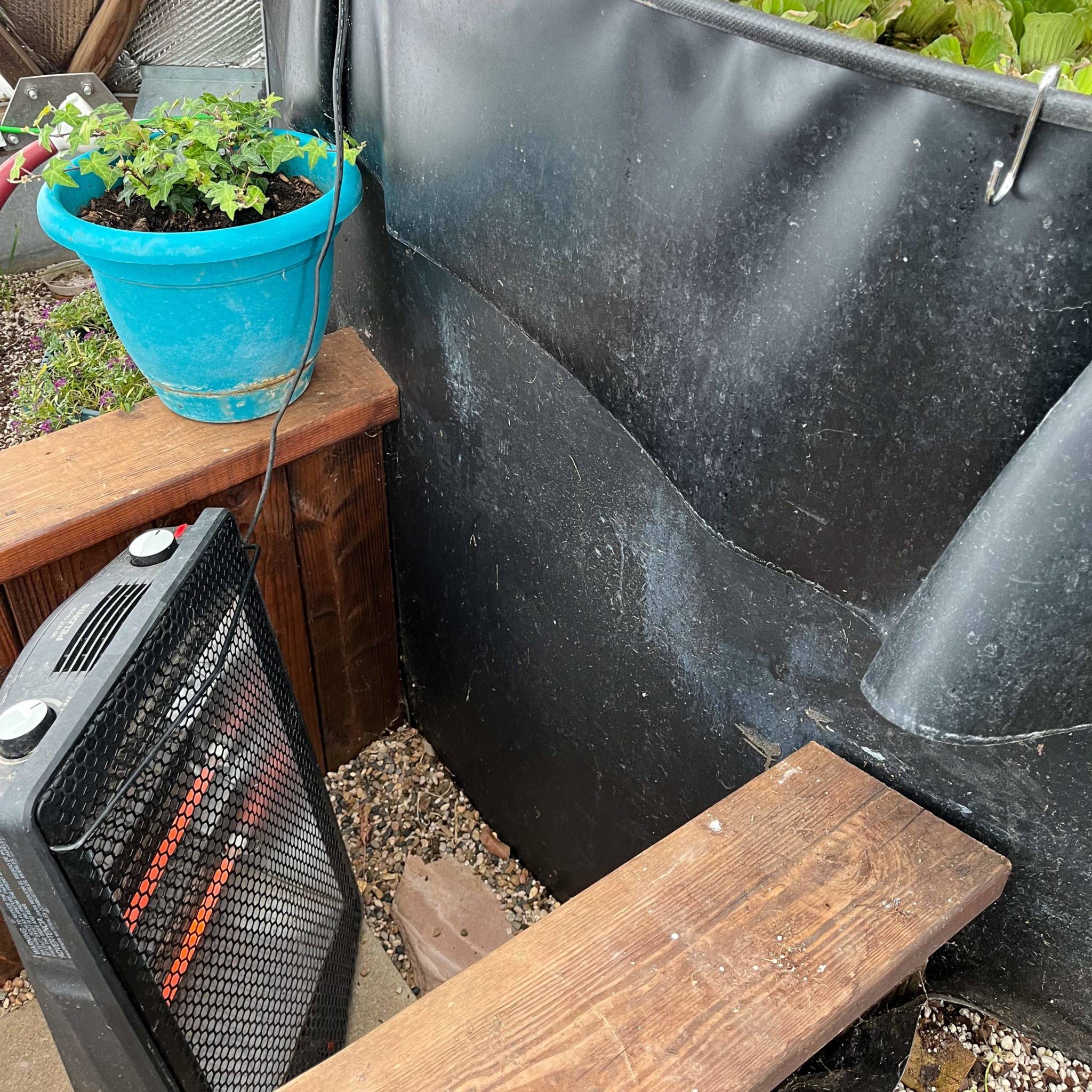
If you do have electricity running out to your greenhouse, you do have some other options to keep your greenhouse warm. In 2021 we began using infrared heaters in our Domes with electricity. Our facility is 100% solar powered, so this option is essentially free to us but is still cost effective for those on the grid. You would position the infrared heater similarly to the propane options, 6-12” away from and directed towards the wall of the above ground pond. This heating source also creates a dry heat and as we mentioned dry heat helps to keep the humidity levels lower.
Another alternative method of heating that we have seen from a fellow Dome Owner is radiant heating under the pond. Susan Long lives in zone 6b, owns a 22’ Growing Dome, and is currently growing a variety of veggies and fruits such as avocados and pomegranates. Her Dome is in a clearing surrounded by forest and does not receive the optimal amount of sun during the winter months, so heating is a must. She opted to install an electric radiant heating system on the ground underneath the pond.
This type of system does need to be installed before the pond liner is dropped in. She found this method to be easily installed, simply sandwiching the electric heating cables between two layers of thin-set after the sheet metal was in place but before proceeding with the pond liner installation. Susan is eventually going to use the dry heat produced by her wood boiler, the heat source for her home, and tie it into the Dome. Susan is sharing updates on our Growing Dome Enthusiasts Facebook group, so join us to follow along!


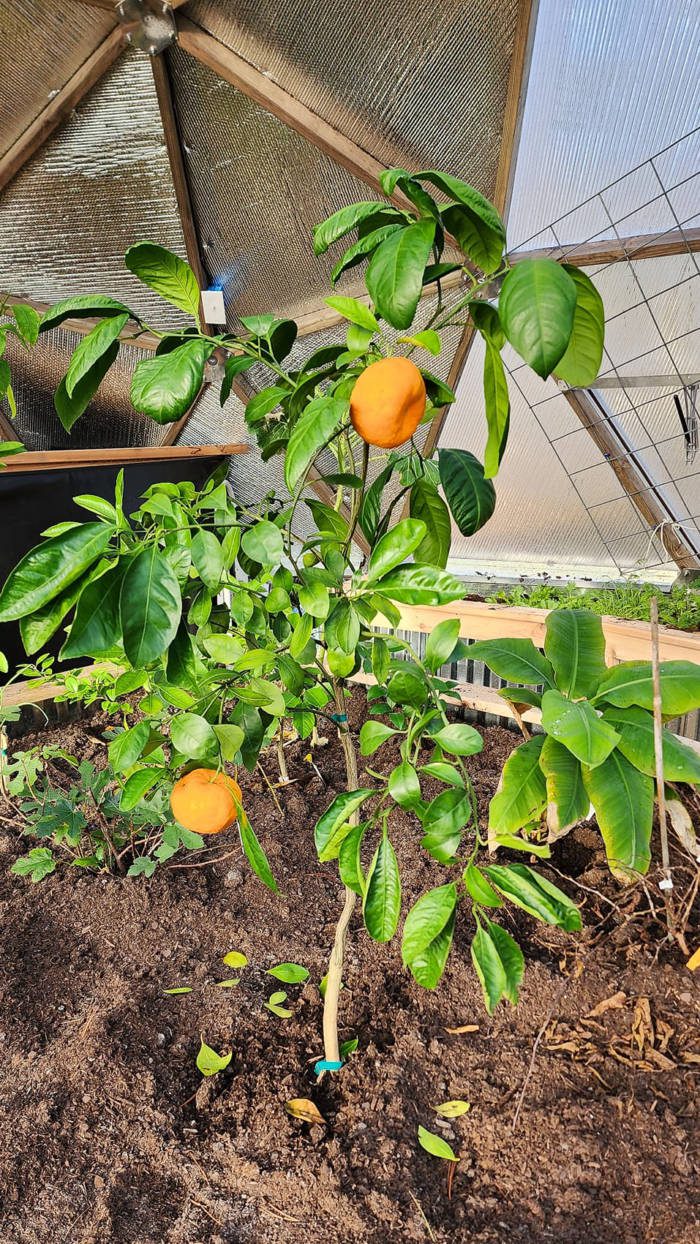
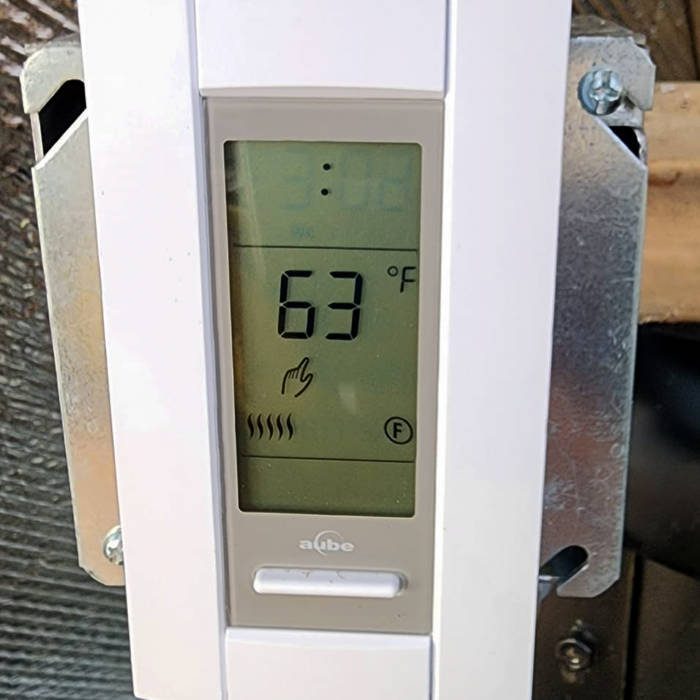


Udgar found that a submersible bucket heater is a great way to heat the pond water, and thus, the greenhouse warm. These types of heaters are readily available and fairly inexpensive at your local feed store, and consume 1Kw of electricity per hour. They are safe to use in the pond and will easily increase the temperature of your pond by about 3 degrees F during the day or more depending how many hours they are run.
Remember that if you are heating your pond to keep an eye on the water temperature, especially if you have fish. They may require more or less food depending on the temperature of the water. Also, make sure to keep an eye on your humidity especially if using specific types of supplemental heat. You might find a dehumidifier useful in combating high humidity levels.

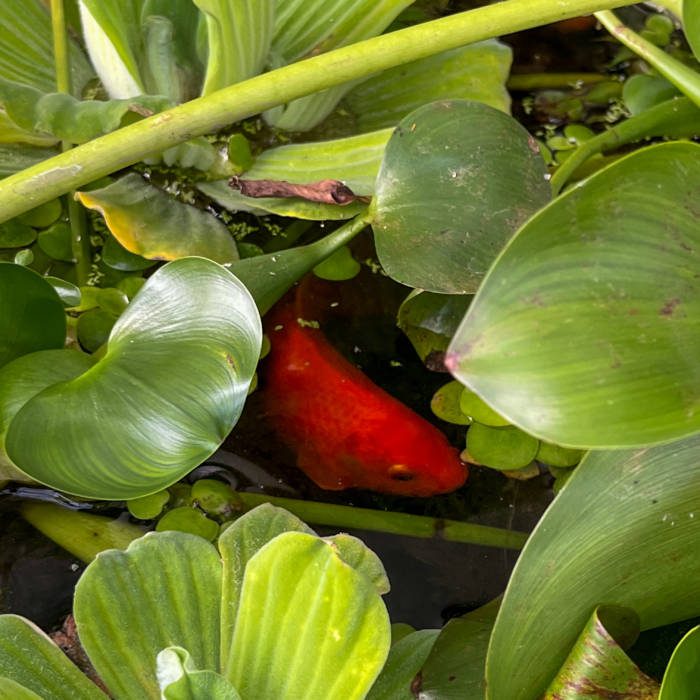
If you are looking for more information about winter greenhouse gardening, check out this page for some more helpful tips!
Join the Inner Circle
An exclusive place for year-round gardeners. Join us to receive our monthly newsletter, “The Happy Grower”. In our newsletter we provide community stories, event updates, expert gardening tips, and exclusive offers.
